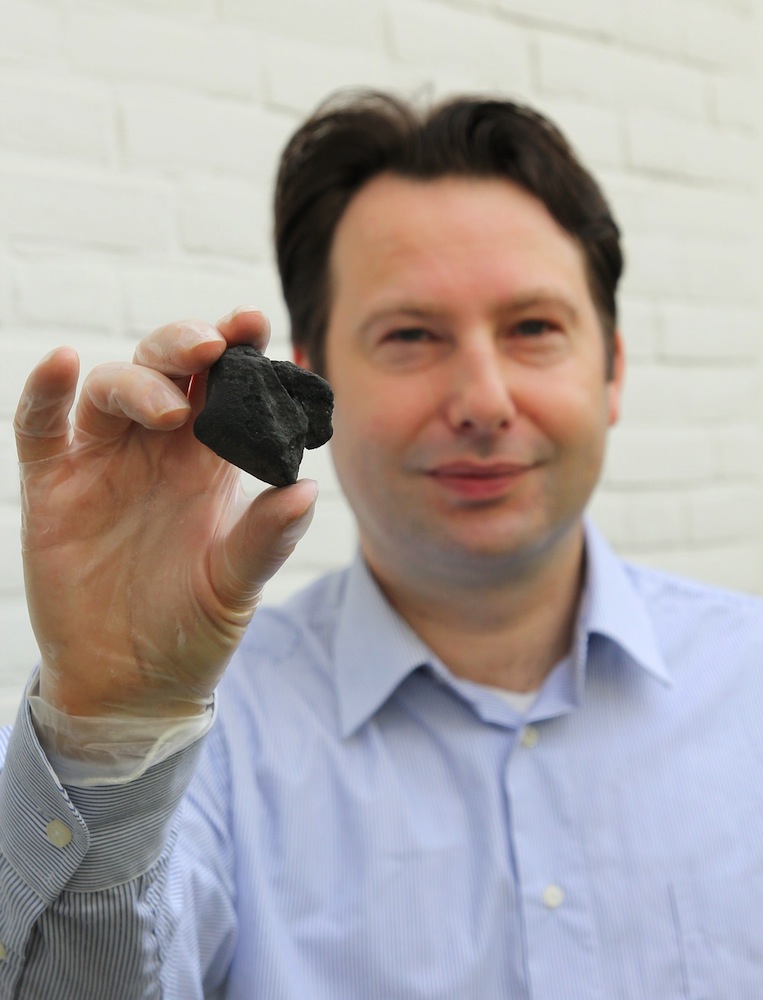Dutch Rock Is Long-Lost Meteorite

A hunk of rock found in a private collection is a rare meteorite, researchers have announced.
The brown-black rock, which is small enough to fit in the palm of a hand, plummeted to Earth with a flash of light and a hissing sound on Oct. 27, 1873. It landed in a field near the Dutch village of Diepenveen.
But the tale of this space rock didn't come to light until 2012, when an amateur astronomer named Henk Nieuwenhuis came across it in the collections of a "Mrs. L. Kiers," according to the Naturalis Biodiversity Center, a museum in Leiden, Netherlands, which now has custody of the meteorite. Nieuwenhuis immediately realized that the rock, kept in a little wooden box, was from space. He could also tell that it was a rare carbonaceous chondrite, a subclass of meteorites that makes up less than 5 percent of all meteorites ever found. [Space-y Tales: The 5 Strangest Meteorites]
"I really couldn't believe my eyes," Nieuwenhuis said in a statement.
Carbonaceous chondrites are special because they're very primitive. They contain unmelted pieces of the original ingredients of the solar system, formed from the cloud of dust and gas that eventually congealed into planets, moons and asteroids. In the early, chaotic days of the solar system, carbonaceous chondrites raining down on Earth may have brought with them elements such as hydrogen and nitrogen, and even organic material, scientists say. These ingredients were crucial for life's development on Earth.
The Diepenveen meteorite is the fifth meteorite ever found in the Netherlands. It weighs just 2.4 ounces (68 grams) and looks like an ordinary rock, but researchers from the Royal Netherlands Association for Meteorology and Astronomy (KNVWS) and geoscientists at Vrije Universiteit of Amsterdam have confirmed that it came from outer space.
An analysis of the meteorite revealed organic molecules, which contain carbon. The identity of the molecules is being studied, according to the Naturalis museum.
Breaking space news, the latest updates on rocket launches, skywatching events and more!
The museum will display the Diepenveen meteorite along with all four of the other Dutch meteorites on Jan. 18 and Jan. 19, 2014. Scientists are also hoping to find more pieces of the Diepenveen rock. This December, they're asking local residents to go through their attics and family heirlooms in search of rock fragments or documents regarding the 1873 meteorite fall.
Follow Stephanie Pappas on Twitter and Google+. Follow us @livescience, Facebook & Google+. Original article on LiveScience.
Join our Space Forums to keep talking space on the latest missions, night sky and more! And if you have a news tip, correction or comment, let us know at: community@space.com.

Stephanie Pappas is a contributing writer for Space.com sister site Live Science, covering topics ranging from geoscience to archaeology to the human brain and behavior. She was previously a senior writer for Live Science but is now a freelancer based in Denver, Colorado, and regularly contributes to Scientific American and The Monitor, the monthly magazine of the American Psychological Association. Stephanie received a bachelor's degree in psychology from the University of South Carolina and a graduate certificate in science communication from the University of California, Santa Cruz.

